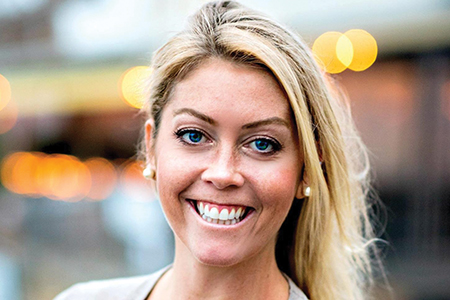Chronic Disease Management And The Need For Control
By Kristina Figueroa
 I never knew I had a problem, beyond having to take synthetic insulin for the rest of my life. But I am a patient living with Type 1 Diabetes (T1D) and self-diagnosed with an interrelated eating disorder.
I never knew I had a problem, beyond having to take synthetic insulin for the rest of my life. But I am a patient living with Type 1 Diabetes (T1D) and self-diagnosed with an interrelated eating disorder.
At the age of 10, I went on an insulin pump, which gave me freedom from the relentless snacking needed to maintain control. I grew into puberty, trained as an athlete, and the hormonal changes caused crazy blood-sugar swings, meaning that routine snacking was still required. Many of us with T1D are very dependent on others, but we aren’t quick to admit this dependence.
WHAT DOES THAT MATTER WHEN IT COMES TO LIVING WITH A CHRONIC DISEASE?
Diabetes education is overwhelming. We were taught the “rule of 15,” meaning if my blood-sugar was below 70mg/dl, I should consume 15g of carbohydrates and wait 15 minutes before rechecking to make sure my levels had risen. Seems simple, but it isn’t.
Time and again I’d go low. Fruit snacks became the quick acting treatment. I’d eat a pack, wait 15 minutes, and my blood sugar would be lower. I’d eat another pack, wait another 15 minutes to find that it was still too low.
THIS MOMENTUM WAS NOT SUSTAINABLE.
After changing my insulin regimen a few times, I started fast-tracking the treatment process for lows. This seemed to work until I realized that this treatment pattern developed greater dependence on food and an increased “all or nothing” mentality.
My lows were a chance to eat whatever I wanted. As I grew into adulthood, the social influence of the #fitfam (i.e., embracing health and fitness) phenomenon prompted what I call my “closet eating.” I would secretly overdose on insulin to run my blood sugars low, giving me a medical excuse to eat whatever I wanted.
No one would know that I’d just eaten the entire bag of Oreos. My medical necessity for food became an addiction — an excuse to allow me to indulge in foods that I shouldn’t otherwise eat. I finally realized that I’d been doing this because I believed the lie that I was told during my nutrition classes as a kid: “I always needed food to survive.”
I confronted this fear of balance and threw out the processed foods in our home. I stocked up on fresh fruits, veggies, proteins, and healthy fats. When I dropped low, I started treating with the rule of 15 again, but with healthy food.
I’m not the only one who has had my health behavior impacted by the diagnosis of a chronic disease, and because these behaviors aren’t uncommon, recognizing these patterns can help us treat patients better within the clinical trials process and beyond. I wonder if my “all or nothing” mentality is because of food stigmas learned at a young age.
What if we changed the way we delivered our diabetes education? What if we used an existing mobile app to develop new habits over time? Or better yet, what if we started asking more specific questions in the review of systems during medical exams? This could allow for us to track thought patterns and identify risks for greater outcomes and comorbidities.
If my endocrinologist asked me if I struggled with carb counting or food, my answer would likely be, “No.” But if I was asked what my typical food intake looked like on a daily basis, and if I was purposefully excluding certain types of foods and why, my answers would reveal behavior patterns that would show an unhealthy relationship with food.
In drug development, this policy change could increase the information collected in trials and has the potential to reveal greater efficacy and/or superiority through patient-reported outcomes (PROs) —and that’s just the beginning of the positive change.
This guest column appears as part of a collaboration with Inspire, a million-member healthcare social network that helps life sciences companies connect with patients.
KRISTINA FIGUEROA is a T1D patient and advocate. She works for Sydney-based George Clinical. Kristina is currently a DrPH candidate at the Brody School of Medicine at East Carolina University.
